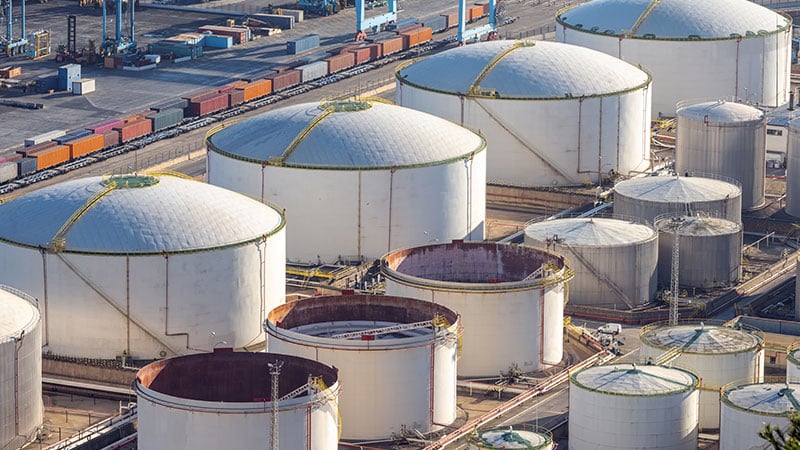Within the intricate domain of bitumen applications in India, Viscosity Grade (VG) bitumen stands as a pinnacle of performance and versatility. Its ascension to prominence, supplanting the erstwhile penetration grade bitumen in accordance with Indian Standard (IS:73), stems from its superior reliability and adaptability across a multifaceted spectrum of conditions.
Distinguishing Between Penetration Grade and Viscosity Grade Bitumen
A fundamental dichotomy exists between penetration grade and viscosity grade bitumen. While penetration grade bitumen is characterized by its penetration value at 25°C, VG bitumen adopts a more nuanced classification, predicated upon viscosity values at both 60°C and 135°C. This meticulous approach not only broadens the range of applicable temperatures but also furnishes a more accurate prognostication of bitumen behavior under diverse thermal exigencies.
Understanding Viscosity Grade Bitumen Classification
VG bitumen unfurls across four discernible grades: VG10, VG20, VG30, and VG40. The ascending numerical progression denotes escalating viscosity levels, thereby delineating harder bitumen variants. A comprehensive tabular exposition elucidating properties and specifications accentuates the discernment process.
Compliance with Viscosity Grade Standards
Adherence to meticulous standards underpins the integrity of Viscosity Grade bitumen. Conforming to benchmarks delineated by IS 73, ASTM, and AASHTO underscores the industry’s commitment to precision and consistency. The epochal transition from penetration to viscosity grading in 2006 underscores a paradigmatic shift towards enhanced performance and reliability.
Applications of Viscosity Grade Bitumen
The chameleonic adaptability of VG bitumen finds expression in a kaleidoscope of applications, finely calibrated to accord with climatic and traffic exigencies. Its intrinsic attributes, including impermeability to water and formidable adhesion, endow it with indispensability across an expanse exceeding 250 diverse applications, ensconcing superior performance and enduring longevity.
Advantages of Viscosity Grade Bitumen
VG bitumen’s discerning evaluation regimen, encompassing assessments at 25°C, 60°C, and 135°C, heralds a panoply of advantages:
- Extensive applicability spanning a gamut of temperatures, from 25°C for fatigue cracking to 135°C for construction, augurs well for predictive modeling.
- Streamlined testing protocols, with a parsimonious seven tests vis-à-vis the fourteen mandated for penetration grade, engender appreciable time and cost efficiencies.
- Augmented durability, courtesy of precise viscosity measurements at 135°C facilitating optimal mixing and compaction temperatures, thereby redounding to prolonged pavement life.
- Consistent performance under scorching climes, attenuating rutting tendencies and fortifying pavement integrity.
- Curtailment of tender mixes during construction, attributable to stipulated kinematic viscosity values at 135°C.
- Applicability in high-traffic locales, conferring resilience in the face of onerous loads.
Exploring VG Bitumen Grades
1. VG 10 Bitumen:
- Preening itself as the softest grade of viscosity bitumen, VG10 finds favor in spraying applications and surface coating, particularly in frigid climes.
- Its sphere of utility extends from temperatures as low as -10°C to a moderate 25°C, rendering it indispensable for regions grappling with inclement weather.
- Predominantly deployed in the fabrication of bitumen emulsions and modified bitumen products, its versatility is underscored, especially within the Indian context.
2. VG 20 Bitumen:
- Tailor-made for road construction in chilly climes and high-altitude redoubts, VG20 proffers a nuanced solution to the conundrum of temperature differentials.
- Its optimal performance envelope spans average temperatures ranging from 30°C to 37°C, catering to regions characterized by temperate exigencies.
3. VG 30 Bitumen:
- Emerging as the linchpin in erecting robust pavements capable of withstanding prodigious traffic loads, VG30 exemplifies resilience and endurance.
- Its ubiquity in road construction, insulation, building, and cutback bitumen production attests to its multifaceted utility, particularly within the Indian milieu.
- Endowed with an innate adaptability to hot and rainy climates, it enjoys preeminence in India owing to its empirically validated performance metrics.
4. VG 40 Bitumen:
- Stepping into the fray in locales besieged by heavy traffic loads and sweltering temperatures, VG40 proffers a veritable panacea to the exigencies of vehicular transit.
- Its heightened viscosity furnishes enhanced resistance to shoving and other maladies attendant to elevated temperatures and onerous traffic volumes.
- Endorsed as a stalwart replacement for the erstwhile 40/50 penetration grade bitumen, it epitomizes longevity and performance in the face of adversity.
- Selecting the Appropriate Viscosity Grade Bitumen
The orchestration of a judicious selection process hinges upon the meticulous adherence to IS73 standards. By aligning with the mean temperature prevailing in the field, ascertained through an analysis of the average temperature during the hottest week over a quinquennial period, one can obviate potential pitfalls arising from extreme thermal oscillations and onerous traffic exigencies.










